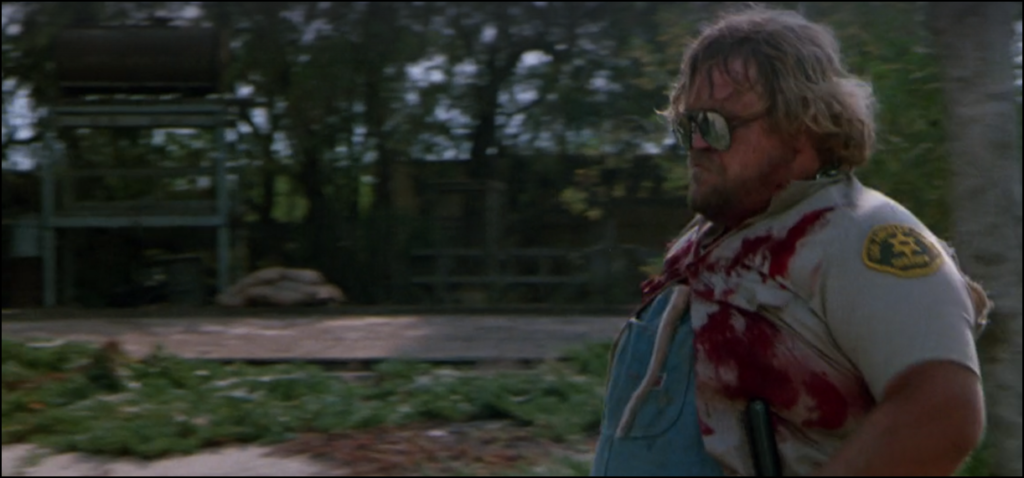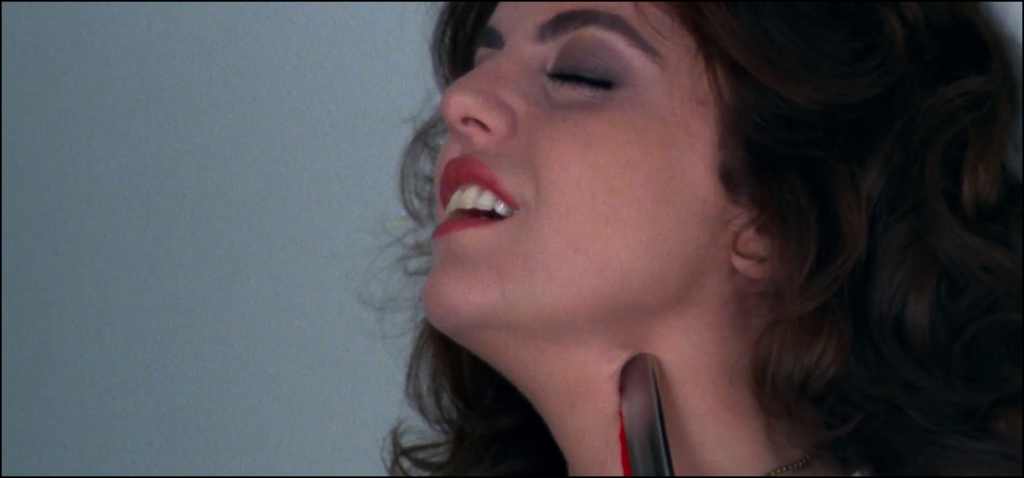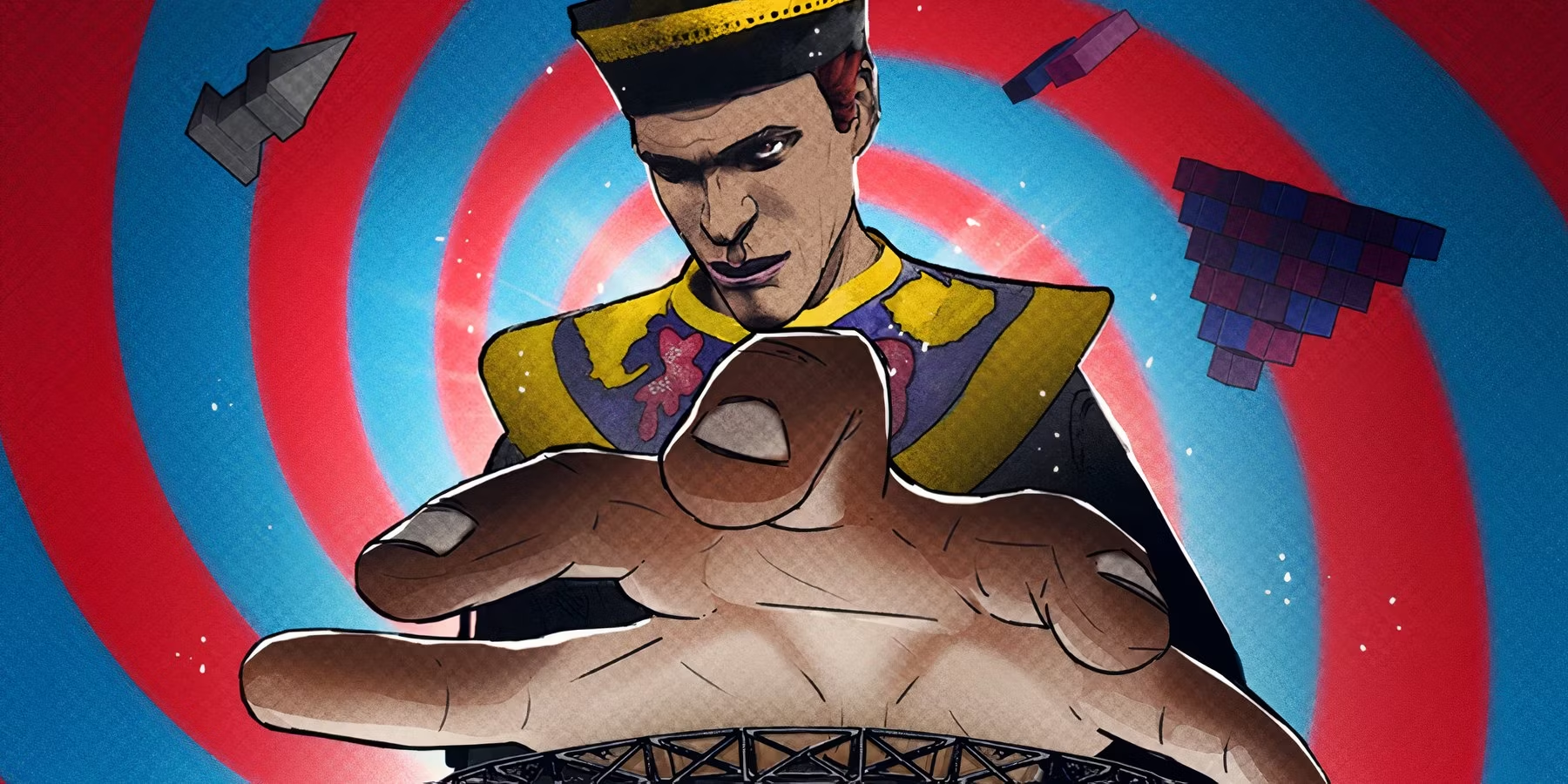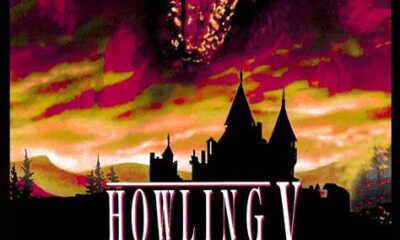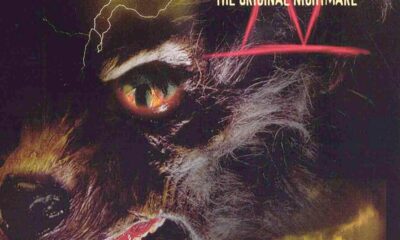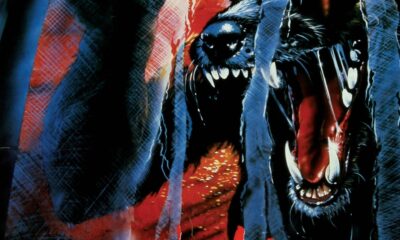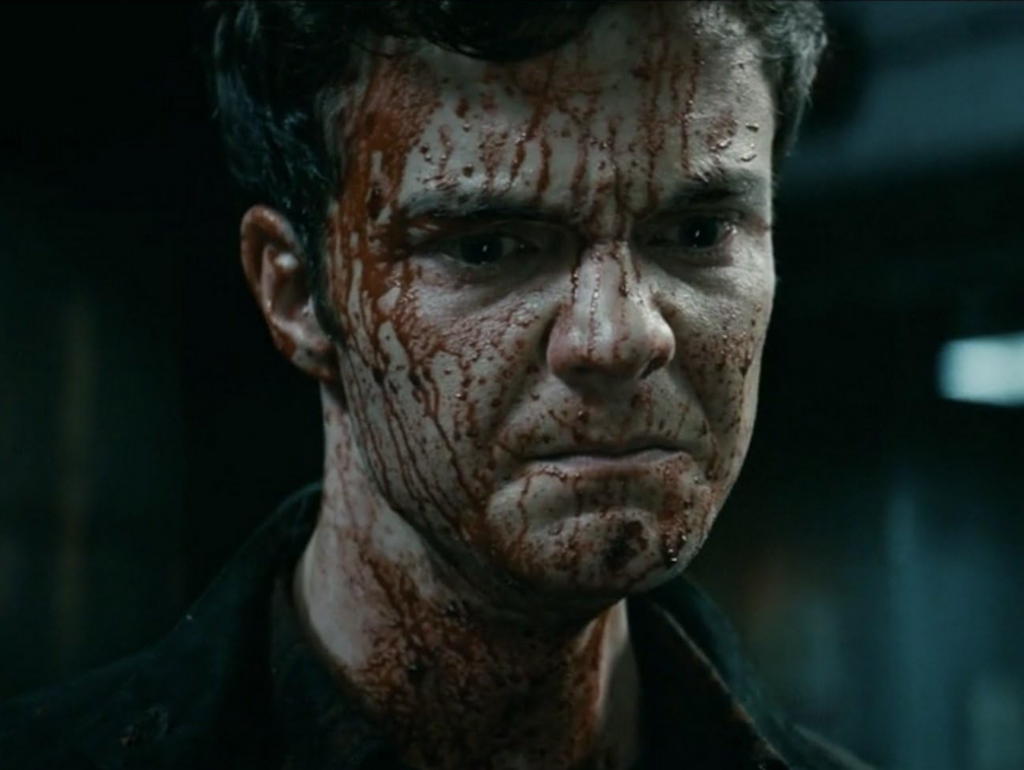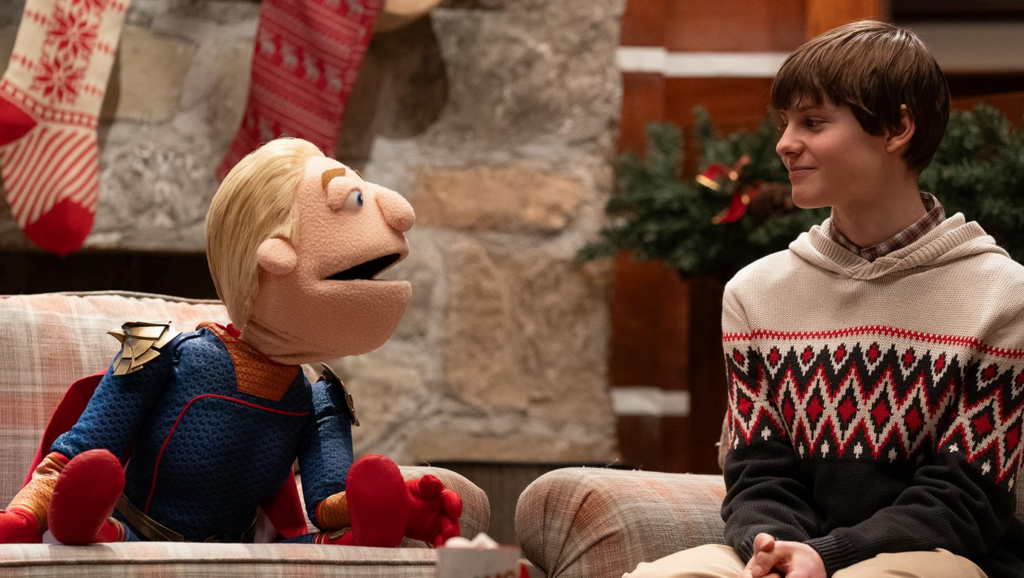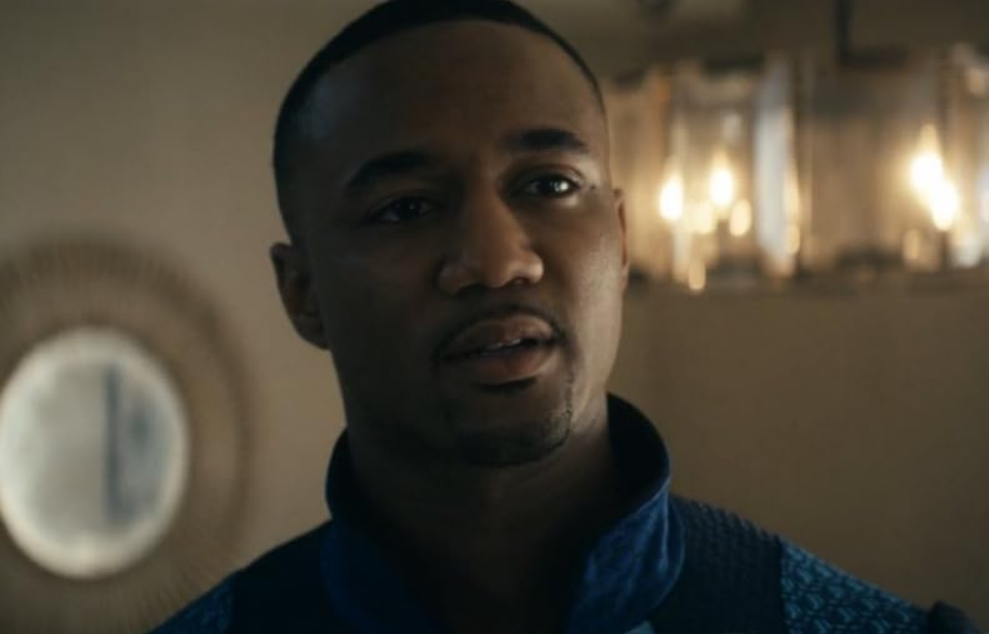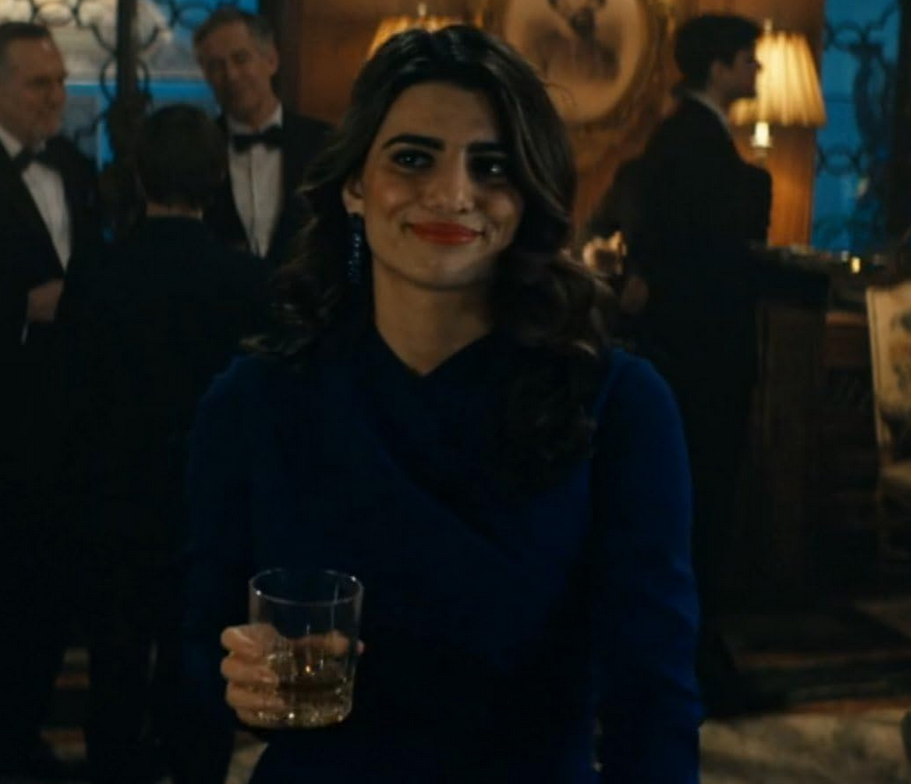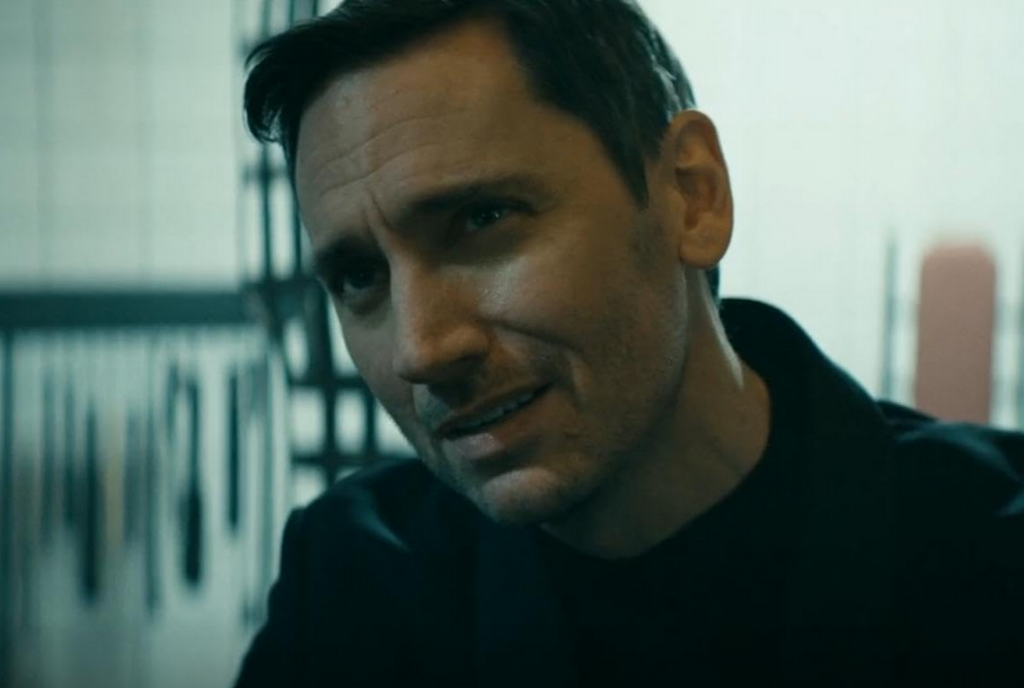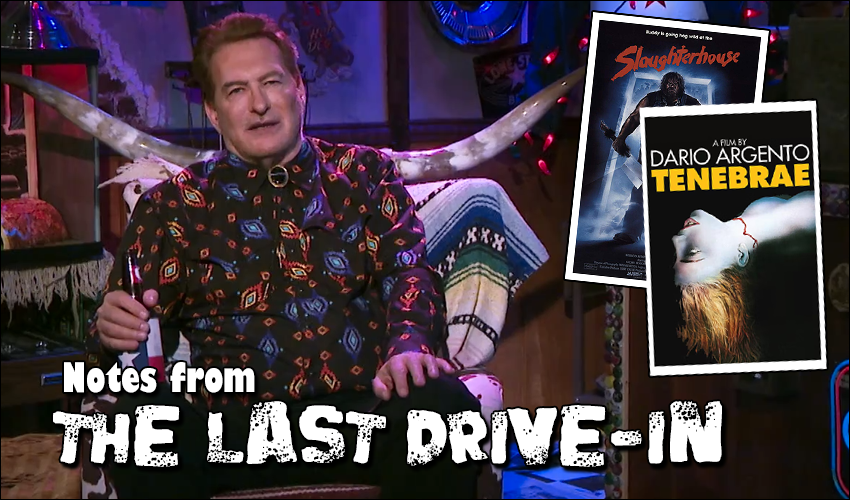
Notes from the Last Drive-In: S4E5 – ‘Slaughterhouse’ and ‘Tenebrae’
More Videos
Published
2 years agoon
Haunted MTL’s Notes from the Last Drive-In continues this week with S4E5, featuring Slaughterhouse (1987) and Tenebrae (1982). Does the show maintain the moment from last week’s brilliant Nosferatu double feature, a series highlight, or do we see another crack in the foundations this season?
How well does Shudder‘s premiere movie hosting program do this week, and does the “junk food” night theme work, or is the loose stitching of films that best not be paired? Let’s find out together, shall we?
"World hot dog map" are actual words strung together tonight.
Amazing.#thelastdrivein @therealjoebob @kinky_horror @shudder— Haunted MTL 🏳️🌈 (@HauntedMTL) May 28, 2022
Slaughterhouse (1987)
Not the Grindr where he is normally found.#thelastdrivein @therealjoebob @kinky_horror @shudder— Haunted MTL 🏳️🌈 (@HauntedMTL) May 28, 2022
Rich Roessler’s 1987 film Slaughterhouse is considered a slasher comedy. The movie follows an old man named Lester Bacon (Don Barrett) and his son Buddy Bacon (Joe B. Barton), who go on a killing spree when their dilapidated hog farm is being foreclosed upon in the interest of a more modern facility. Soon, community members, such as a group of local teens like Liz Borden (Sherry Leigh), meet gruesome fates as the local sheriff Fred Borden (Willliam Houke) investigates the deaths.
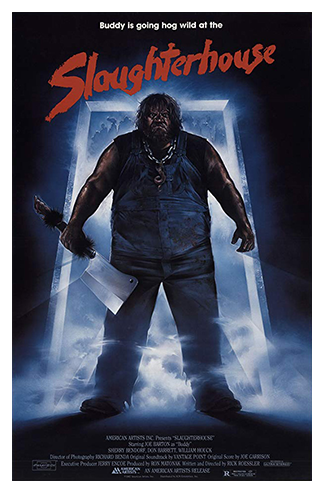
Rick Roessler wrote and produced the film with cinematography by Richard Benda and edited by Sergio Uribe, made for a budget of $110,000. The film has achieved a puzzling cult following, mainly on the back of actor Joe B. Barton, who proved to be the most exciting thing associated with the film.
This is a rough one. We’ve not been to such terrible movie depths since back during the infamous double feature of Sledgehammer and Things. Slaughterhouse, in many ways, can be seen as the poster child of the downfall of slashers, coming well after the genre had more or less declined in 1984.
The film is nonsensical; most of the kills are one-note, and the only character who amounts to much grunts like a pig for the movie’s duration. The film offers no shock, no sense of dread, and every beat is predictable. This is honestly one of the most paint-by-numbers slasher films I’ve seen. It doesn’t even have a solid musical identity, nor any real impressive shots. Even the kills feel lacking to a great degree.
There are a few gems in the pile of pig droppings, though. A loony sequence of the snorting killer joy-riding in the police cruiser is pretty fun, and a couple of the kills are worth adding to a reel, involving a grinder and another with a powerful blow to the abdomen. Beyond that, though, there isn’t much to love about it. Most of the charisma comes from actor Joe B. Barton as Buddy, and all he does is wield an improbably-large looking cleaver, grunt like a pig, and kill a few folks.
The film doesn’t even use the slaughterhouse setting and humans as meat substitutes to its advantage. So much of the movie creates motivation for the killers tied to the slaughterhouse industry, and it doesn’t add much to the proceedings. I think a more insane director with supreme bad taste could have done a hell of a lot more with this one. There is a decent slasher buried deep in this one, but the director must trim the fat.
Joe-Bobservations on Slaughterhouse
The highlight of the evening was a toss-up between Joe Bob’s torturing of resident vegan Darcy the Mail Girl with meat factoids or Joe Bob’s tepid praise over the film. There was a lot of hot dog history with some digressions into the nature of the hog slaughter process, which worked to give Joe Bob and Darcy some fun little argumentative bits. Darcy does have a point that the filming of the slaughter of the pigs (even if people ate them) seemed unnecessary. After all, critics could say the same thing about Cannibal Holocaust.
More subtle were some of the dunks Joe Bob had over the quality of the film. The film wasn’t great, and it was apparent to our host, but he delivered the relevant factoids we Mutants crave. The stories surrounding actor Joe B. Barton doing press tours as Buddy Bacon were hilarious, including an apparent meeting with President Ronald Reagan. How the hell?
The first half of the night closed out with Darcy in protest, dressed as a pig and singing the praises of the animals, as they are pretty adorable. She also presented Joe Bob with a package from Buddy himself with props from the movie, which was pretty sweet.
Final Thoughts on Slaughterhouse
I could not get into this one. It wasn’t a film that was so unpleasant that it put me off, but instead, I felt little to engage with during the run time. Virtually no characters worth caring about with some predictable kills and overly set-up plot result in perhaps one of the worst films shown in The Last Drive-In. Occasionally we need these movies, though, and there is some stuff worth celebrating within it, but as a whole, this probably would have made for a film better paired with something like The Texas Chainsaw Massacre 2. It would have helped the movie go down better, especially given the evening’s follow-up, Tenebrae.
Joe Bob Briggs gave the film 2 1/2 out of 4 stars. I feel like he was maybe overly generous here. I would give Slaughterhouse 1 1/2 out of 5 Cthulhus. It could have been meatier.

Best Line: “Buddy’s a good boy, but he has what you might call basic hygiene problems.” – Lester Bacon
Tenebrae (1982)
Remember, if you see someone shoplifting an Italian crime novel, you didn't. #thelastdrivein @therealjoebob @kinky_horror @shudder— Haunted MTL 🏳️🌈 (@HauntedMTL) May 28, 2022
How do you follow up on one of the most generic slasher films ever made? With one of the most Giallo and the Gialli in Dario Argento’s Tenebrae (1982). The film, written and directed by Dario Argento, features editor Franco Fraticelli and cinematographer Lucian Tovoli, frequent collaborators with Dario Argento. The film also features a soundtrack with three of the members of Goblin, Claudio Simonetti, Fabio Pignatelli, and Massimo Morante.
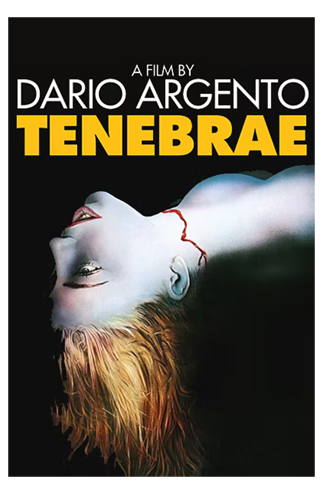
The film follows an author, Peter Neal (Anthony Franciosa), who goes to Rome to promote his latest novel with his literary agent Bullmer (John Saxon), and assistant Anne (Daria Ncolodi). He is also followed by an ex-lover, Jane (Veronica Lario). Upon his arrival, a woman is murdered, and soon bodies pile up, all seemingly reflecting the author’s work. Who is the killer, and what is their connection to Neal?
While not the best of Argento’s output, it’s a quality film. It returns to a more classical form of the Giallo for Argento after the supernatural diversions of Suspiria (1977) and Inferno (1980). The film is also quite bitter in many ways, seemingly reacting to Argento’s feelings about critics toward his work and comments about women’s treatment in his movies. Of course, he would be cagey regarding these ideas in typical Argento fashion over the years. As with most of his work, the film operates heavily on dream logic and strange thematic elements that at times seem purposeful and at other times thrown in.
The story itself is fine, though the revelation and fake out feel arbitrary because the film needed some extra twist with the reasoning being fast and loose to wring out a little more mystery. The core idea of an author trying to figure out murders based on his writing is novel enough, at least for the time, but has been done more compellingly elsewhere.
The characters are primarily broad caricatures with strange Argento flourishes except for one or two. Anthony Franciosa is fantastic and makes the film work as well as it does, lending this Italian feature a little credibility. John Saxon is John Saxon, which is entirely appropriate. Saxon plays one or two types of characters – smarmy jerk and stern father – but plays them very well. He fills the smarmy jerk role here, but his presence is always welcome. Giuliano Gemma as Detective Giermani is good, but he’s a distant third in presence behind Franciosa and Saxon.
However, the women do not get as much to sink their teeth into here. Daria Nicolodi is a fine actress but primarily relegated to the role of assistant and hysterical screamer with little agency. Then again, Dario Argento’s treatment of Nicolodi is not surprising. Veronica Lario looks pretty and dies well. Eva Robin’s (her chosen name), the transgender actress who plays the girl on the beach in an erotically charged scene, is a refreshingly modern casting choice, looking just suitable for the role of the sexual beach siren who humiliates an essential character in their youth.
The aesthetics of the film are notable. Where Argento’s films may falter in writing, plot, and characterization as a whole (there are exceptions), his depiction of mood, his inventive framing, and his close relationship with the best Italian prog-rockers of the 1970s, Goblin, means you’re going to have a good time no matter how indecipherable his movies can get. The film has some beautiful shots and staging. One scene depicting an amputation splatters a stark white environment with arcs and slashes of bright red blood, an early kinetic and gorgeous moment. One scene in public space among the fascistic brutalist architecture of Mussolini’s Rome evokes Alfred Hitchcock with tight alternating edits and dramatic angles, bringing tension to crowded daylight.
Of course, the theme tune is among the best of the Argento and Goblin collaborations.
While the film falls apart structurally and logically, it is never dull and presents genuine moments of shock and surprise. It hits all the crucial hallmarks of Giallo and can be wildly inventive, sometimes to its detriment. A two-and-a-half-minute tracking shot up, over, and down the side of a house to the film’s theme song is one of the more puzzling examples of excess.
Joe-Bobservations on Tenebrae
Dario Argento is always a bit of a weird one when it comes to The Last Drive-In. The director is undoubtedly one of the most influential directors of horror in Italy and the genre worldwide, but his works tend to be hit or miss for our host. There was some of that ambivalence on display during the episode as, again, we are presented with stunning moments, but the film itself was rather loosely strung together.
However, what is always refreshing is when the ball is in Darcy’s court, and her knowledge of Italian horror is always welcome, especially when Joe Bob appears bewildered by it all.
As for insights into the film, I feel my favorites were the background of Anthony Franciosa, the lead, who was compelling and problematic. I also appreciate the reveal that John Saxon has no memory of making this film. Of course, the revelation of transgender actress Eva Robin’s and the nature of the sexy beach scene was also quite fun.
Perhaps the best moments of the show are when Joe Bob’s frustrations come to the surface and, as a result of this, his sheer annoyance with the tracking shot was quite hilarious.
Final Thoughts on Tenebrae
While Tenebrae is undoubtedly not the highlight of Dario Argento’s career, the film is one of the purest expressions of his aesthetics and logic. The structure may be a bit flimsy, but my god, does it look good. Tenebrae is an impressive house of cards, supported by a base of three or four strong performers, great music, cinematography, and some Italian Giallo weirdness.
Joe Bob gave the film 4 out of 4 stars. I think that is to be expected; as much as he grouses about some of Dario Argento’s impulses, Joe Bob has a level of respect for the guy, and the films are generally quite excellent. While Tenebrae is quite remarkable, I also do not feel it is worth a perfect score on my scale. I have some issues with it, but I’ll still watch the hell out of it. I’d give Tenebrae 4 out of 5 Cthulhus.

Best Line: “I’ve been charged, I’ve tried building a plot the same way you have. I’ve tried to figure it out; but, I just have this hunch that something is missing, a tiny piece of the jigsaw. Somebody who should be dead is alive, or somebody who should be alive is already dead.” – Peter Neal
Haunted MTL Drive-In Totals
As always, we have the official drive-in totals from the groovy ghoulies over at Shudder.
"Character Actor Meat Grinding", you say? There's something very Argento about "Stiletto to the Stomach". #TheLastDriveIn pic.twitter.com/2qQmprexAq— Shudder (@Shudder) May 28, 2022
Sounds like we're going to a @GWAR show tonight! #TheLastDriveIn pic.twitter.com/HbwQPyIXFn— Shudder (@Shudder) May 28, 2022
And we have our totals for the evening.
- 62 vertical miles of elevated horror
- 76 hot dogs
- 5 German Hot Dog Fathers
- 350 Pounds
- 6 Dumb Teens
- Hot Dog Map Fu
- Celebrity Chef Name Drop Fu
- Pig Boy Joy Ride Fu
- Pork Pun Fu
- Letter Opening Fu
- Pig Disco Dancing
- Tiajuana Sluicing
- Thigh Stabbing
- Tower Tumbling
- Dissociating
- Gratuitous Airport
- Gratuitous Dancing
- Gratuitous Latin
- Beach Gangbang
- Surprise Lumberto Bava
- Street Trash Defense Force
- Darcy Cosplay (Pig and Jane)
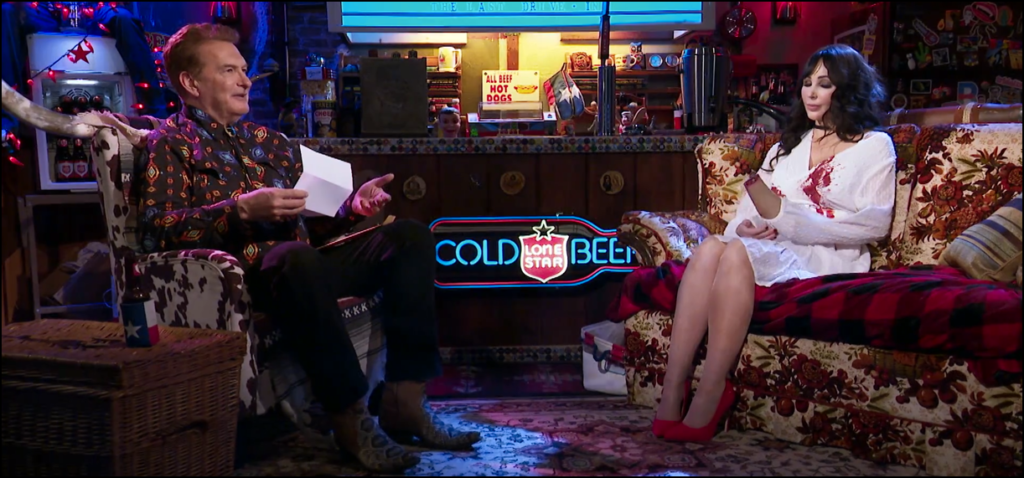
Episode Score for the Last Drive-In: S4E5 – Slaughterhouse and Tenebrae
I was pleased with how well last week went regarding the night’s theme. It certainly helped that both films were excellent, but the night felt far more cohesive overall than this season. The pairing made a lot more sense, and the movies worked together for something more significant. It was Nosferatu (1922) and the 1979 remake, but it worked.
Unfortunately, we are taking a step back this week. The stated theme was a junk food night, but unlike a hot dog, the connective tissue was absent between the films. I suppose the idea is that Giallo might be like the 1970s and 1980s junk food of Italian cinema, but it felt like a stretch, especially given how good Tenebrae is compared to Slaughterhouse.
I have been dinging the show pretty hard this season for what I feel is a mismatch in the juxtaposition of the films. That hasn’t been an issue before because it was expected, and the show hadn’t quite stated so explicitly what they were going for in episodes during previous seasons. It was more fun to interpret. Now that the show says, “this is [insert night here],” the pairing seems looser and less exciting.
Hell, The Cannibal Man (1972), one of the films shown in the mid-evening trailers, would have been a better pairing with Slaughterhouse. What’s going on?
Slaughterhouse was mainly terrible but could have been salvaged had it not been paired with a film that completely obliterated its quality. The evening’s theme completely fell flat as well. I feel like I can only give this episode of The Last Drive-In 3 1/2 out of 5 Cthulhus.

With that, we are done until next time. Please join us again next week for another review and recap. What did you think, though? Why not share your thoughts in the comments about the show and the two films shown. Did you have a favorite?
Please join us on Twitter next Friday as we live-tweet with the rest of the Mutant Fam during The Last Drive-In with Joe Bob Briggs.
Got my weekly dose of 'thee-ate-er'#thelastdrivein @therealjoebob @kinky_horror @shudder— Haunted MTL 🏳️🌈 (@HauntedMTL) May 28, 2022
Want more meaty fun? (Sponsored link)
Instead of watching Slaughterhouse paired with Tenebrae, consider pairing it with The Cannibal Man. Our sponsored link to Amazon can help you snag a blu-ray copy, and you’ll be helping out the site.
David Davis is a writer, cartoonist, and educator in Southern California with an M.A. in literature and writing studies.

You may like
We have come now to the finale of season four of The Boys. And while it didn’t have the literal blood fireworks I wanted, someone did get ripped in half in the air. So, that’s pretty close.
As a note, I will try to avoid spoilers as much as possible. This ending was a hell of a gut punch that should be experienced as blindly as possible. That being said, I will not be able to avoid spoilers and still give a full legitimate review. Proceed at your own risk.
The story
The main storyline for this episode is the attempted assassination of President-Elect Robert Singer. The Boys join forces with the Secret Service to protect him. But, as we learned last episode, Annie has been replaced with a shapeshifter. A shapeshifter that was welcome not just into Hughie’s anus, but into the protective bunker in which the President-Elect is hiding.
What worked
The first thing I want to discuss about this episode is the ending. But we need to do this carefully.
The important thing here is that the ending breaks your heart on so many levels. So many terrible things are happening to characters that it’s almost hard to keep track. And each moment is significant to each character.
I cannot give a specific example. But no matter who your favorite character is, you’re going to weep for them.
Unless your favorite character is Sage. And this is the next thing that made this episode so fantastic.
I don’t think I’m spoiling anything to say that Sage’s plans worked out exactly as she wanted them to. And she got exactly what she wanted.
What she wanted wasn’t power. It wasn’t money or fame or vengeance. It wasn’t to win the love of anyone. She just wanted to see if she could do it.
That is a terrific, terrifying motivation! Because all she wants is to play a massive game of chess with people as pieces. She doesn’t care about anyone. She just wants to see how many people she can manipulate. She just wants to set things on fire to see if she can.
Fantastic. A plus villain work.
The next thing I want to discuss is a cornerstone of the whole series.
The morality of The Boys shifts through the series. While it’s very much a battle to save the world from overpowered super monsters, it’s also a battle for the souls of our real heroes. And in that battle, there are two warring factors. We have Hughie, always trying to bring everyone up to a better level. And we have Butcher, who has no problem at all hitting rock bottom with a shovel in hand to do some more digging.
In this episode, we saw almost every member of The Boys challenged. Will they rise to their higher angels, or sink with their demons?
On a similar note, I am so glad that the writers kind of addressed my issues with Annie. They did this by having the shapeshifter get right into her face and accuse her of thinking that she’s better than everyone.

While that was devastating for the character, it was a little cathartic for those of us who felt like Annie was a little too good of a good guy.
What didn’t work
This is a small matter, but it is an issue that I want to address. After Annie finds out that Hughie slept with her doppelganger, she is furious at him.
In addition to this being unfair, it’s also a very cliche element to add. In almost every instance of a lookalike in fiction, there’s a moment where the love interest of the victim is fooled. Or almost fooled. And it’s always the same fight. It’s just played out and predictable. I’m just glad that it didn’t last very long.
Now that we’ve come to the end of the season, I can officially say that it was amazing. The story was deep and rich. The special effects were a stomach-turning good time. The character development was spot-on and satisfying. And, of course, it left me just about gagging to see what happens next. Unfortunately, it looks like we’ll have a bit of a wait. Because as of right now, the fifth season isn’t expected until 2026.

We’ve reached the second to last episode of The Boys, season four. And, as is appropriate for the penultimate episode of any show, things have to get a lot worse before they can get better.
Let’s discuss.
The story
Christmas is coming, and the whole world is getting ready. Ryan, despite being very clear that he didn’t want to appear on any TV shows or movies, has been strong-armed into participating in a Vought puppet Christmas special. He draws the line, though, when asked to sing about turning one’s parents in if they start talking about woke things.
Meanwhile, The Boys are trying to keep each other together. Butcher decides to take Sameer to the rest of the team. He also gets Frenchie out of prison, hoping they can make the Sup virus necessary to finally take down Homelander. Instead, this decision means disaster for one member of the team.
What worked
I first want to talk about Ryan’s speech near the end of the episode. Because it was exactly the moral of this whole story.
Ryan’s dad is a monster. His stepdad is also kind of a monster. But Ryan is a good kid. He cares about people, about family. And while he loves Homelander and Butcher, he doesn’t want to be like them.
Even better, this speech sounded like something a kid would say. Ryan didn’t open his mouth and start sounding like a college student all of a sudden. He sounds like a kid who misses his mom and wants to live up to the good standards she set for him. And I think that’s terrific.
Speaking of Homelander, he shot himself in the foot in this episode. I said earlier in the season that his hubris was going to be his downfall, and I was right. Without Sage, he just has the same weaknesses he’s always had. He’s going to fail because he just isn’t clever enough or patient enough to succeed.
Without Sage, I think a win is in the bag for The Boys. This isn’t to say that Homelander by himself isn’t dangerous. It’s just that he’s more like a wildfire than a controlled burn. He’s going to cause a lot of damage, but not get anything he wants out of it.
More’s the pity for him and everyone else who has to share his world.
Finally, I am thrilled with A-Train’s redemption story. I love that he wants to be a good person not to save himself, but to be a good person. His honest, pure and warm reaction to that little kid smiling at him in the last episode was heartwarming. It changed him in a moment, bringing to light a goodness that he’s been keeping under wraps for a long time.
This, along with Ryan’s courageous speech, proves once again what The Boys does so well. Yes, it’s gruesome. Yes, there’s blood and balls and batshit events. Yes, someone occasionally gets ripped in half. But there is a true human goodness in the story. One that we catch glimpses of. There are good people among the monsters. There is hope for redemption.
What didn’t work
Of course, so few things in this life are perfect, and this episode was no exception. For instance, I was irritated by the insinuation that Butcher cheated on his wife.
That just doesn’t make any sense. We’ve seen flashbacks of Billy and Becca. They were happy. He was happy. He was head over heels for her. And I don’t think it’s realistic or necessary for the character to throw in that he cheated. It does nothing to add to the story, it’s just a weird and offputting moment.
Doesn’t Butcher have enough to hate about himself? Can’t we just give him that at least he was a good husband?
Finally, I kind of hate that we ended up with Annie being caught. It’s just cliche, which is something I don’t normally say about this show. It feels lazy unless they do something very clever with it in the last episode. Which, I suppose, they might.
Next up is the season finale. And with this season being as insane as it has been, I’m expecting nothing short of bloody fireworks. And I mean literal fireworks of blood. At this point, would it surprise anyone?
 (4 / 5)
(4 / 5)
Episode six of The Boys was one of the most surprising episodes of the series so far. And that is certainly saying something. Because this season has so far been bonkers.
The story
Our episode today revolves around a party at Tek Knight’s lovely mansion. Yes, it does look just like Wayne Manor.
The Boys know that Tek Knight is working with Homelander on something, but they don’t know the details. So they decide to send Hughie in to bug the mansion.
Because that’s worked so well the other two times he’s tried to hide a bug!
It should surprise no one that this time goes no better. Hughie finds himself in Tek Knight’s basement. And by that I mean his BDSM dungeon.
Meanwhile, the party upstairs is no less disturbing. Homelander and Sage are trying to convince some well-off political donors to support a cue after the election. When pressed for details on his plan, Homelander freezes. He looks to Sage for help, but she wasn’t recently shot in the head and still in the junk food stage of her healing.
Fortunately, or unfortunately depending on your point of view, Neuman jumps in and saves the day.
What works
If I’m going to say one thing about this episode, it didn’t hold back at all. I didn’t expect them to show a character masturbating, sitting their bare behind on a cake, or spraying breastmilk into someone’s face. But every time I thought they’d cut the scene and let something be left to our imagination, they did not do that.
This is a dangerous move. Whenever you show the monster, you run the risk of them not being scary enough, or gross enough. As Stephen King says in Danse Macabre, to leave this sort of thing to the imagination if the reader makes things so much worse. So when they finally experience the monster, they might say that this isn’t so bad. It could have been so much worse.
But in this case, they managed to avoid that by making the scenes, especially the ones in Tek Knight’s dungeon, so much worse than I imagined it would be.
What doesn’t work
While this was a deeply disturbing episode in many ways, there was one really innocent and sweet moment.
And yes, I did have a problem with it.
Confronted by Firecracker, Annie decides to apologize for spreading rumors about her when they were kids. She tells her that she is genuinely sorry.
And I believe her. I don’t think Firecracker did, but I did.
So why is this an issue? Because I’m starting to think that Annie is maybe too nice. She is too good.
I know that Annie is our good guy. But every one of the other good guys has flaws. Hughie let his pride get in the way and took Temp V. MM hid himself from his daughter instead of teaching her to work through her emotions. Kimiko is far too closed off and has a hard time trusting others. Frenchie numbs himself with drugs. And well, what hasn’t Butcher done?
It is unrealistic that Annie is just so kind and so flawless. We all have shadows in our personalities. We all have weaknesses, we all mess up. We all do things we wish we could take back. The fact that Annie doesn’t seem to have anything like that is not just unrealistic. It’s infantilizing.
Give her some deep dark secrets. Give her something real to regret.
This was a shocking episode, even for someone fairly jaded like me. I wasn’t expecting the sort of weird sexual depravity, though I guess maybe I should have seen it coming. It was dark, upsetting, tense, and funny as hell. And with just two episodes left in the season, I can imagine the stakes are only going to get higher.
 (4 / 5)
(4 / 5)
By the way, if you like my writing you can get my short story, Man In The Woods, on Smashwords and Amazon.

